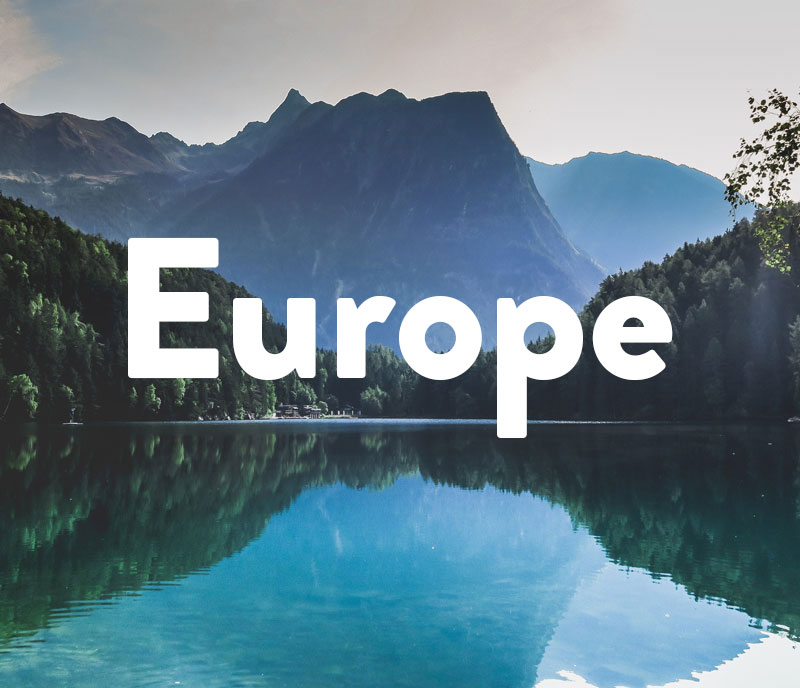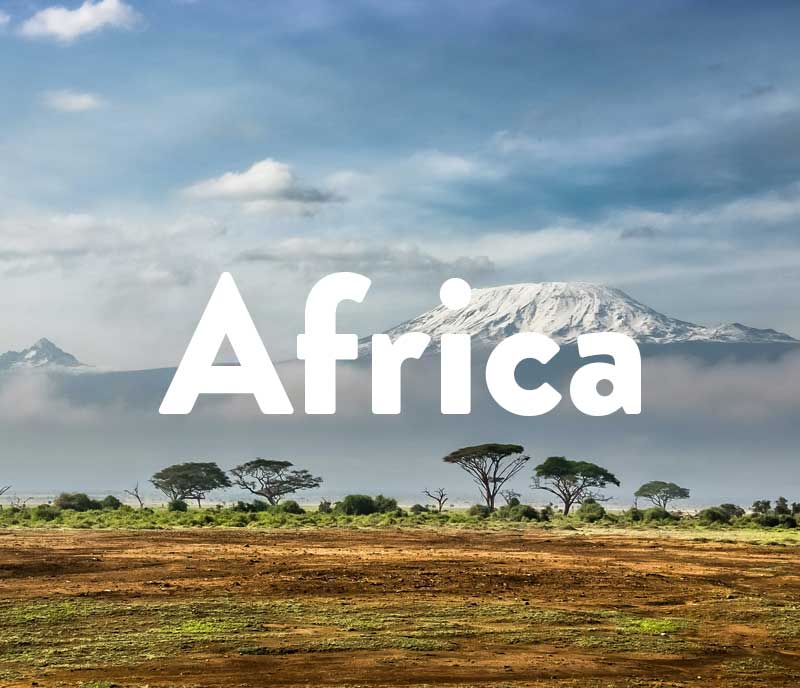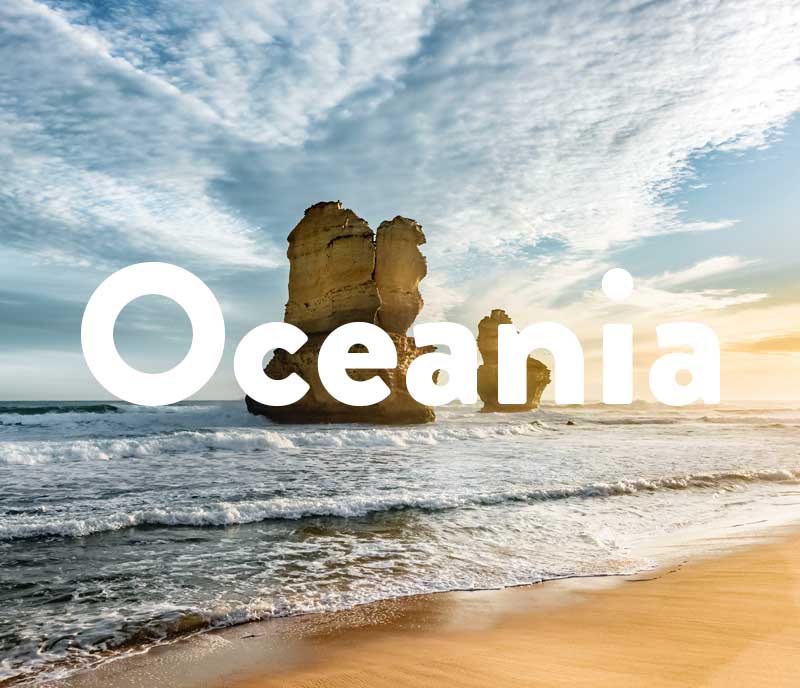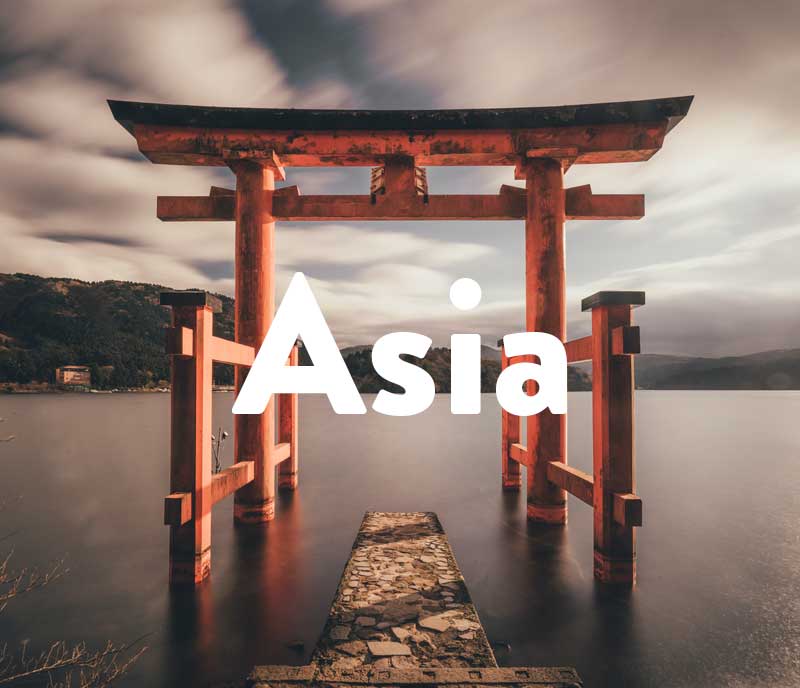The stereotypes alone don’t sound bad: friendly locals, maple syrup and wintery beauty. (We’ll pass on the hockey though.)
But there’s much more to this country than just that. Canada is bursting with awe-inspiring landscapes, busy metropolises and fascinating culture.
Dive into our (free) travel guides below!
.
.
.
.
.
.
.
.
The key info
With a total area of 9,984,670 square kilometers, Canada is the largest country in the continent of America. Even more impressive is the coastline, measuring an insane 243,041 kilometers. That’s six times the Earth’s circumference! Only 37,602,103 people live in Canada and many areas in the northern tundra are considered uninhabitable due to its relentless climate. Canada’s only neighbour is the US. The capital is Ottawa, however, Toronto is Canada’s largest city and Vancouver is considered the city with the highest quality of life – in the world. French and English are its official languages.
Some of Canada’s terrain is rare or non-existent in other countries: The treeless tundra is relentlessly cold and covered in permafrost. The boreal forests are south of the tundra and coniferous trees grow which drop extremely acidic needles. As a result, the humus is strongly acidified and thus unsuitable for agriculture.
Canada in Numbers
- Population: 37 million citizens (and about 400,000 bears!)
- Total area: 9,984,670 km²
- Capital city: Ottawa
- Currency: Canadian Dollar
- Language: English and French
- Religion: 67% Christian, 24% non-religious, 3.2% Muslim, 1.5 % Hindu, 1.4% Sikh, 1.1% Buddhist, 1% Jewish, 0.6% other.
The 5 largest cities in Canada
1. Toronto – 5.4 million citizens
As the most diverse city in the world, many different cultures meet here. Almost half the population of Toronto comes from abroad.
The CN Tower is perhaps the most well-known landmark of Toronto and defines its skyline. This 553 meter high tower is one of the city’s most important attractions and also the most unavoidable. This Canadian icon looms over the city center and can be seen from almost anywhere in the city.
The Royal Ontario Museum, known as ROM, is one of Canada’s leading museums with an international reputation for outstanding exhibitions. It houses an amazing collection that encompasses natural history, art and culture from all over the world. One of Toronto’s newest top attractions is Ripley’s Aquarium near the CN Tower. This fabulous facility displays all kinds of marine life and is one of the most popular activities for families in Toronto.
2. Montreal – 3.5 million citizens
This town lies in the French-speaking province of Quebec and is an important centre for Canada’s economy. The Mont-Royal rises 233 meters above the town and, lying right next to the town centre, is the most imposing green space. The oldest church, the Basilika Notre-Dame de Montréal, was established in 1656 and is now significantly bigger than it was original. Old Montreal is an idyllic town quarter with building dating back to the 17th, 18th and 19th century.
3. Vancouver – 2.2 million citizens
Home to Canada’s largest port, Vancouver is a very important city for the Canadian economy. In addition to its industrial activities, Vancouver also has a steady stream of tourists. Stanley Park is a lush peninsula park with huge trees positioned in downtown Vancouver. A paved riverside path surrounds the green area, and most visitors take the time to explore the area on foot or by bicycle. Formerly industrial, Granville Island is now a thriving center for activities with a relaxed and distinctive atmosphere.
Artists and retailers have moved in among houseboats, theatres, galleries and restaurants into converted warehouses. In clear weather both in summer and winter, the Grouse Mountain offers an incomparable panorama of views. This is especially true in the evening, when the lights of the city are visible. A gondola departs daily from the road to the summit, where hikers can enjoy restaurants, activities and wildlife all year-round.
4. Calgary – 1.2 million citizens
This is a city that attracts many large companies and boasts one of the highest numbers of millionaires per head. The luxuriously decked out, privately owned “Rocky Mountaineer” train runs between Calgary (or Jasper) and Vancouver and cuts through the historic Canadian Pacific line west via the towering Rocky Mountains. The Heritage Park in Calgary is a typical pioneer village, with dozens of reconstructed historic buildings and lively performers in costume from four different eras – from a fort trading in fur from the 1860s to a 1930s marketplace. Calgary Zoo was founded in 1912 and is located on St. George’s Island on the Bow River. The zoo houses lots of examples of rare and endangered species as well as botanical gardens.
Edmonton – 1 million citizens
Edmonton is particularly famous for being home to the largest mall in Canada, the West Edmonton Mall. Canada’s West Edmonton Mall is not only the country’s largest shopping center – and one of the largest in the world – but also a major tourist attraction. In addition to hundreds of shops and restaurants, there is also a hotel, cinemas, an ice rink, aquarium and much more.
Edmonton is also an important center for the oil and gas industry. The Royal Alberta Museum moved to its current location in 2018 and is now the largest museum in western Canada. Elk Island National Park is just a 30-minute drive from Edmonton. It has a forest area with lakes and wetlands and is home to all kinds of wildlife, including elk, deer and beavers.
Top Tourist Attractions
1. Niagara Falls
Niagara Falls is Canada’s most famous natural attraction, drawing millions of visitors every year. Just over an hour’s drive from Toronto, and positioned along the American border, these massive waterfalls fall approximately 57 meters before hitting its depths. You can see the falls at a surprising distance from several important points.
2. Banff National Park
Banff-National Park lies in the heart of the spectacular Rocky Mountains in the region of Alberta. It represents some of the most beautiful views in Canada. Turquoise lakes, snow-capped mountain peaks and glaciers are a common sight in this stunningly beautiful park.
3. CN Tower
On the shores of Lake Ontario, in Canada’s largest city, lies the legendary CN Tower, one of Canada’s most iconic landmarks. The tower is 553 meters high and dominates the skyline.
Best Time To Visit
The best time to visit Canada is during the autumn months between September and November. The weather has cooled down by then, but it is still pleasant; the summer crowds have disappeared; prices are falling and changing autumn leaves provide a beautiful setting for a vacation. Fall festivals including pumpkin, apple and wine festivals are also in full swing, offering visitors the opportunity to visit farms and orchards a bit further off the beaten track.
In general, the summer months are the most popular travel time to travel. Regardless of when you choose to travel to Canada, there will be some benefits (possibly cheaper flights and hotels, fewer crowds in winter) and some disadvantages (like cold weather, less hotel options). Of course, Canada is a vast country with significantly varying economic and climatic conditions.
Holidays in Canada
In addition to its Christian holidays, Canada also has many national traditions that are extensively celebrated:
- 01. Jan: New Year’s Day
- 02. Feb: Groundhog Day
- 10. Feb: Family Day
- 14. Feb: Valentine’s Day
- 17. Feb: Heritage Day
- 09. Mar: Commonwealth Day
- 17. Mar: St. Patrick’s Day
- 01. Apr: April Fools’ Day
- 12. Apr: Easter Sunday (varies)
- 22. Apr: Earth Day
- 23. Apr: St. George’s Day
- 10. May: Mother’s Day
- 18. May: Patriots’ Day
- 21. Jun: National Aboriginal Day
- 21. Jun: Father’s Day
- 01. Jul: Canada Day
- 09. Jul: Nunavut Day
- 12. Jul: Orangemen’s Day
- 03. Aug: New Brunswick Day
- 02. Sep: Labor Day
- 23. Sep: 1st Day of Fall
- 14. Oct: Thanksgiving
- 31. Oct: Halloween
- 11. Nov: Remembrance Day
- 25. Dec: 1. Christmas Day
- 26. Dec: 2. Boxing Day
- 31. Dec: New Year’s Eve
Do I need a visa?
If you have an EU passport, then no! In that case, you can travel in Canada for up to six months without a visa. Just enough time for such a big country!
Canada’s Currency
Canada uses the Canadian Dollar. When you change your currency, you’ll get the following notes:
$5, $10, $20, $50, $100
Your Packing Essentials for Canada
- Documents and passport
- Electronic Travel Authorization (ETA)
- Proof of insurance (medical + belongings + civil liability)
- Vaccination certificate
- Emergency contact (contact information)
- Travel guide / book to read
- Pullover / raincoat / windbreaker
- Swimming costume / towels
Blogger’s secret tips
Ahmic Lake, Ontario
Imagine an impressive lake of serene and surreal beauty in front of you, where you can relax and experience adventure. That’s exactly what Ahmic Lake offers. Ahmic Lake is surprisingly family friendly, with two competitive swimming camps for kids.
Kluane National Park, Yukon
The Kluane National Park in the Yukon is one of the places lots of people have heard of, but few have actually had the adventurous spirit to travel to. Kluane National Park offers 22,000 square kilometers of breathtaking wilderness, lush valleys, sparkling ice plains and everything in between – including Canada’s highest peak, Mount Logan.
Twillingate, Newfoundland
Anyone who finds solace in the gentle nostalgia of small coastal communities will love this charming historic town of Twillingate in Newfoundland. Here, you can experience the surreal views of the Atlantic and long boat tours around the many lighthouses in the area. If you drive there in the fall, you’ll love the scenic, secluded trails and unforgettable tastes of seafood and wine.
Most Instagrammable Locations
- Air Canada Centre
- Whistler Blackcomb
- Canada’s Wonderland
- CN Tower
- Vieux-Port de Montréal
- Plateau Mont-Royal
- Ripley’s Aquarium of Canada
Fun Facts about Canada
My apologies! Sorry!
Canadians are known for apologizing – a lot. This does of course lead to awkward or complicated situations before the law, as saying ‘sorry’ is often seen as an admission of guilt. In 2009, the Apology Act put an end to this; ‘sorry’ can no longer be used in prosecution cases.
Education is BIG here
Canada is the most educated land in the world. At least 56% of the population have acquired a degree following their school leaving exams. That’s 6% more than Japan, which is in second place. Certainly an achievement to be proud of!
Canada has more lakes than the rest of the world put together
In Canada there are 3 million lakes, if you count the smaller lakes. That’s more lakes than the rest of the world put together. As well as this, Canada is home to 20% of the world’s fresh water.
Keep reading…
- Winter city breaks 2024 — 10 wonderful destinations around the world
- Holiday at home — plan a relaxing autumn staycation
- Autumn photography — 10 tips for capturing seasonal snapshots
- Tips for your autumn trip — our autumn favourites
- City breaks in autumn 2024 — 8 unforgettable destinations across Europe







